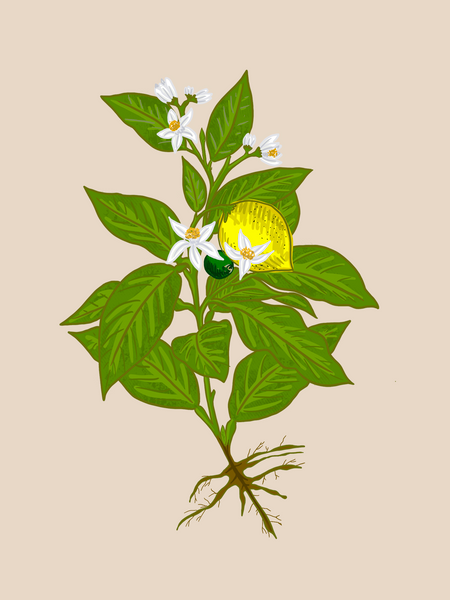Plant Morphology Guides - The Basics of Plant Care
Posted by Jessie Jacobson on Feb 19th 2021
Understanding how plants are built can offer us insight into
the way plants grow. Knowing the basics of plant morphology helps build our
plant parent intuition as we learn to care for our diverse collection of plants
– both indoors and out!

Plant morphology is the study of the physical form and external structures of a plant while plant anatomy is the study of internal structures, especially at the cellular level. Both equally important and equally fascinating – one we can see, one we cannot. Broadly, both studies compare plant parts between species look to find homologous relationships – shared characteristics based on genetic lineage. Bingo! As we understand what traits our plant share in common, we can commonly understand how to cultivate and care for them. One of my favorite courses in college, Botany is the best. Let’s geek out!
Vegetative Structures

Roots: the descending axis of a plant, typically found under the soil, roots anchor and support while transferring water and nutrients to the above ground structures of the plant.
Adventitious roots: roots that form on non-root tissue in order to adapt to their environment. Orchids and other epiphytes form adventitious roots to aid in attachment to trees and to absorb water and nutrients from the air. Adventitious roots may also form to support climbing, stability, propagation, and resource sharing.
Aerial roots: roots formed above ground and are almost always adventitious.
Root hairs: unicellular appendages on actively growing root sections increasing the surface area of roots and responsible for the majority of water and nutrient absorption.
Stems: the ascending axis of a plant which usually grows the opposite direction of the root, the stalk that supports leaf, flower, and fruit growth.
Node: the part of a plant stem where leaves emerge. Pruning often happens just above a node.
Axillary Bud: found directly above a node in the axil of the leaf. This bud can develop into another branch or stem, especially after pruning.
Internode: the part of the plant stem between nodes. This region elongates or stretches when plants are not receiving adequate light.
Apical or Terminal Bud occurs at the end of the shoot. Most new growth originates from this bud. In temperate regions, the terminal bud can experience dormancy causing plant growth stops or slows dramatically.
Apical Meristem: found in root and shoot tips, such as the apical bud, where cell division and differentiation occur.
Leaves: the main plant organ responsible for photosynthesis and transpiration.
Petiole: the stalk that joins a leaf to a stem. Not all leaves have petioles. These are called sessile leaves.
Leaf Vein: leaf veins hold the vascular tissue (xylem and phloem) of plants and create beautiful patterns or networks to translocate water and nutrients.
Leaf Margin: leaf margins can vary greatly, but plants with similar leaf margins often have similar origins or characteristics. The thickness of a leaf decreases closer to the margin, reducing transpiration, preserving resources.
Modified Leaf: whole leaves for leaf parts that are modified for special functions – defense (cactus spines), climbing (tendrils), flower protection or pollinator attraction (bracts), storage of water and food (Aloe).
With this information in hand, you may look at your plant collection a little bit differently and appreciate how all these plant parts work together, in harmony. Cells or the anatomy of plants dictate morphology. Most plant cells are totipotent meaning they have the ability to be “all things”. How interesting?!
See you at Tonkadale!

